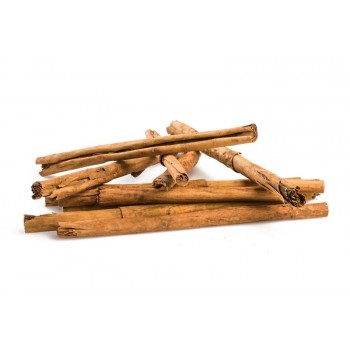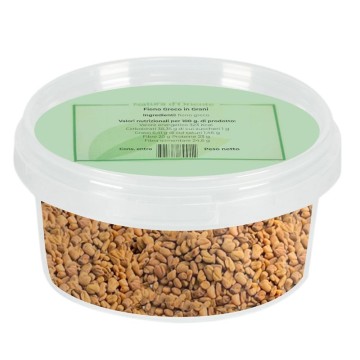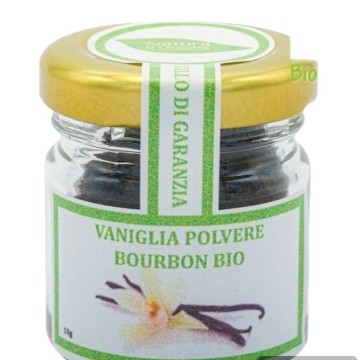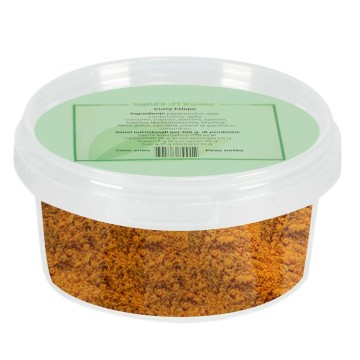The so-called English Curry Powder is a mixture that differs from others due to the different composition of the spices. The main difference between Indian and British curries is that the original English version includes turmeric as the main ingredient, while the other spices varied. The recipe for English Curry stabilized with a complex and pleasantly pungent (not too much) flavor. The pleasant aroma is reminiscent of India and exotic dishes, but it adapts better to British and European cuisine. It enriches with a spicy character dishes based on white meat, especially chicken, vegetables, yogurt sauces and sauces for seasoning various dishes. Curry also has beneficial properties. The mixture of spices is useful for improving the digestive phase, with properties that help the transit of food, avoiding irritation and the formation of abdominal gas. It also has excellent antioxidant qualities, which help regulate the metabolism. The properties of curry spices are also useful for cardiovascular health and blood circulation.
English Curry Spices
This spice blend combines 10 ingredients for an aromatic, balanced and delicate complexity of flavors.
Coriander creates a taste and aroma that evoke citrus, pine needles, dill and fennel. Its sweet and fresh tone pairs well with cumin.
Turmeric adds a warmer flavor to the blend, slightly pungent and with bitter notes; an intense aroma at the base of English curry.
Cloves make a warm taste with notes between sweet and slightly spicy; a fruity aftertaste with floral aromas perfects the English curry blend.
Cumin adds a pungent yet delicate flavour to the blend, pairing with fennel seeds. The warm aroma can release slightly toasted notes.
Fenugreek seeds introduce a pungent, slightly bitter flavour. The aroma is reminiscent of fresh hay, and is highly prized in blends dedicated to flavouring meat and fish.
Laurel is the element that imparts a herbaceous flavour tending towards bitterness, a decisive tone that evokes citrus fruits and balances the deeper spices.
Fennel gives a slightly sweetish flavour, with hints of anise and liquorice and some pungent notes. Delicate and fresh, it spreads a pleasantly intense aroma.
Garlic gives the strong and spicy flavour to the English curry, intensely envelops the palate and creates a base for the other more delicate spicy notes.
Chili pepper is the spicy note, which adds the pungent stimulus and balances the more citrusy or sweetish spices.
Using English Curry in cooking
This mix of powdered spices is suitable for many dishes. Convenient in the ground version, it can be added to meat and fish recipes, sauces and first courses. Its intense color makes various dishes with a particular yellow-orange color, much appreciated on rice. Its aroma, typical of English curry, is intense but light, not pungent. It can be used in cooking as a powdered seasoning, or scalded with vegetables or fried in oil.
Meat and fish: you can use a seasoning based on English curry for white meats such as chicken, rabbit and pork. Also used on fish, as for salmon curry, it is a delicate and versatile mixture useful for marinating. In German cuisine it is used for currywurst (veal sausage with spicy tomato and curry sauce).
Savory recipes: English curry goes well with basmati rice, roasted vegetables, soups, broths and broths. It flavors eggs, and can be used for any dish to which you want to give an exotic touch and a complex aroma.
Sauces: it becomes a spicy element for sauces that flavor meat, rice or fish; or for spreads on bread, salads, vegetables, eggs. The curry sauce that combines spices with white wine, vegetable broth and coconut milk is well-known. Sweet recipes: some creative dishes use curry english with fruit such as pineapple or mango, and with yogurt.
Chicken breast with curry (english)
Ingredients: 700 g chicken breast - 1 onion - 1 sprig rosemary - 1 teaspoon curry english - 1 teaspoon sugar - 1/2 glass of white wine - extra virgin olive oil to taste - salt to taste - Pepper to taste
Preparation Peel the onion and cut it into fairly thin slices; sauté it in a non-stick pan with a drizzle of extra virgin olive oilliva, season with a few sprigs of rosemary and add a pinch of salt. Add 1 teaspoon of sugar to the onion, let it caramelize for a few moments, then add 1 teaspoon of curry and let it flavor for a couple of minutes. Cut the chicken breast into strips and brown it in the pan with the soffritto. Blend with half a glass of white wine; season with salt and pepper, serve.
Origins and History of English Curry
This version of curry powder originates from afar, and comes to stabilize in modern times, on the tastes of British cuisine. As early as 1600, Queen Elizabeth I promoted the colonial voyages of the most enterprising trading companies, which turned towards India and other unexplored territories - the so-called East Indies. The famous East India Company aimed to trade fabrics, tea, opium, spices and other resources that it would find. Over time, the power of the English company grew greatly, and the British integrated into Indian culture, including the cuisine learned from local chefs. Already in the Middle Ages in England many oriental spices were used, but from the 18th century ingredients such as cumin, caraway, ginger, pepper, cinnamon, cloves and nutmeg became more popular. When returning home many English people brought back the mix of spices they had enjoyed, and in the 18th century various recipes for English curry began to spread. The first known curry recipe in English was published in 1747 in Hannah Glasse's cookbook "The Art of Cookery Made Plain and Easy". It was very different from the curry recipes that were served in India at the time and also from modern ones. As time went by, people became more and more familiar with these spices, modifying the recipes until they obtained what we consider English curry today. The main ingredient of British curry powder was turmeric, alongside popular spices such as coriander, black pepper, cayenne pepper, ginger, cumin and cinnamon. Looking for a simpler, more familiar way, the English began to add the spices together with the broth and meat without frying them first. Later, English curry gained popularity as a great way to consume many dishes, especially meat. In the nineteenth century, more recipes and even advertisements promoting curry for well-being and health: digestion, blood circulation, vigor. Between 1820 and 1840, the importation of turmeric, the main spice for curry production in Great Britain, increased threefold. This spice mix became so popular that a typical dish created in Great Britain with English curry, chicken tikka masala, is now called the British national dish. Every year, in October, the United Kingdom celebrates National Curry Week.

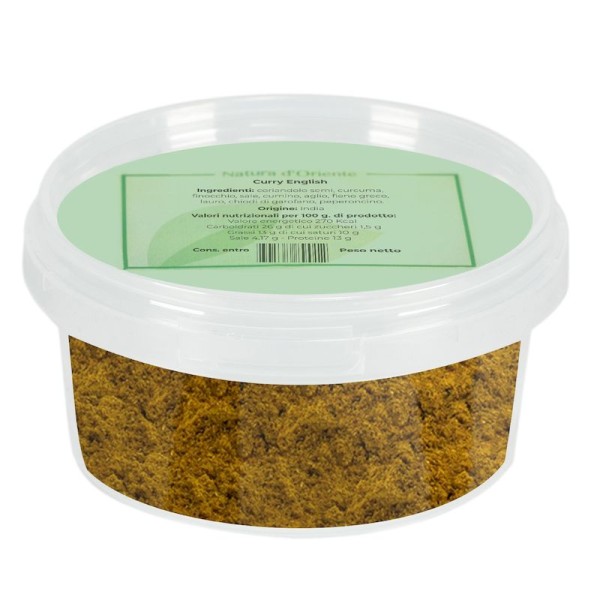









 No reward points for this product.
No reward points for this product.




